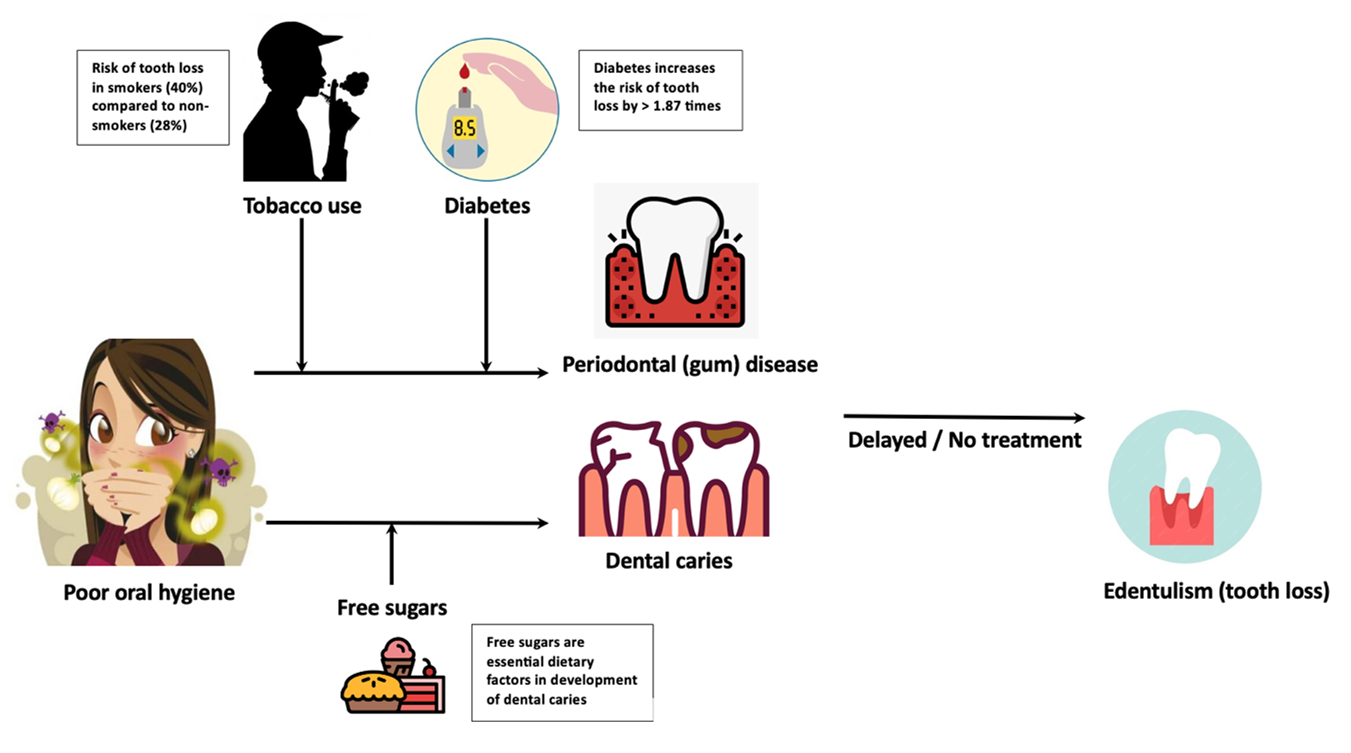Increasing burden of edentulism (tooth loss) in the Western Pacific: Time for action

Oral diseases such as dental caries, severe periodontal disease, edentulism and oral cancers despite being predominantly preventable, contribute significantly to the global diseases burden, affecting people throughout their life stages.
Untreated oral diseases lead to functional limitations and/or compromised aesthetics with negative impacts on quality of life due to the detrimental effects on mental and social wellbeing. This burden is especially high in the Western Pacific Region affecting more than 800 million people (42% of the population) in 2019 (Fig 1), disproportionately affecting poor and vulnerable members of societies, often including people from minority and/or other socially marginalized groups. Availability of oral health services is not aligned with the needs of the population and those with the greatest need often have the least access to services. The economic burden of oral diseases is very high in the Western Pacific Region with the total direct expenditure due to oral diseases about US$ 107 billion. Edentulism (tooth loss) is generally the end point of a lifelong history of oral disease (Fig 2) and is a stark indicator of social and economic inequalities, with disadvantaged populations disproportionately experiencing total tooth loss. Poor oral health during their life course results in fewer remaining teeth in the ageing population, leading to difficulty in eating, poor nutrition, and compromised quality of life. Cases of edentulism in the Western Pacific Region make up the greatest proportion of cases among the WHO regions (26.3%), with about 92 million cases among people aged 20 years or more in 2019. This region has one of the largest and fastest ageing population in the world. One in five adults in the Western Pacific Region aged above 60 years suffered from complete loss of teeth in 2019 (Fig 3). Japan’s 8020 oral health advocacy campaign is based on the understanding that presence of at least 20 functioning teeth by 80 years of age helps to chew effectively, eat a range of foods, and maintain good nutrition thereby ensuring better chances of maintaining general health and well-being at various stages of life. Advocating integrated life-course oral health promotion activities across all age groups such as good and efficient oral hygiene, reduced intake of free sugars, stopping tobacco in all forms and management of systemic diseases such as Diabetes is the key to ensure retention of minimum 20 functional teeth by the age of 80 years. The WHA Resolution on oral health (WHA 74.5) was adopted by the Member States for embedding oral health within the non-communicable (NCD) and universal health coverage (UHC) agendas. This is an excellent opportunity for the region to co-ordinate with countries to formulate national policies integrating oral health into the primary health care (PHC) as well use the common risk factor approach for oral health and NCDs. Related links: Fig 1: Estimated case numbers and prevalence of major oral diseases in WHO regions
Fig 1: Estimated case numbers and prevalence of major oral diseases in WHO regions
 Fig 2: Edentulism is a sequelae of poor oral hygiene and untreated oral diseases
Fig 2: Edentulism is a sequelae of poor oral hygiene and untreated oral diseases  Fig 3: Country prevalence estimate rates of edentulism in people aged 60 years or older per country in the Western Pacific Region (2019)
Fig 3: Country prevalence estimate rates of edentulism in people aged 60 years or older per country in the Western Pacific Region (2019)8020 campaign to preserve teeth
Global Oral Health Action Plan: UHC for oral health by 2030